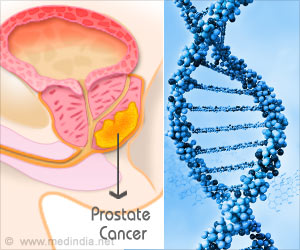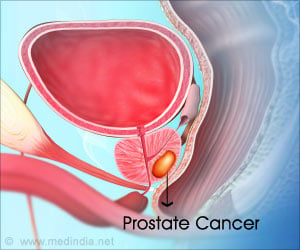A new strategy that turns the protein's own molecular machinations against it, is unraveled by researchers at Dana-Farber/Boston Children's Cancer and Blood Disorders Center.

The study focused on a cell protein called MYCN, one of a family of proteins that are notorious not only for stimulating the growth and proliferation of cancer cells, but also for their ability to evade targeted drug therapies. Like other members of the MYC family, MYCN has proved very difficult for targeted agents to reach and latch onto, making it, for all intents and purposes, "undruggable." Researchers are hopeful that the approach they used in this study of neuroblastoma may prove effective against some of the many other cancers also characterized by a surplus of MYC-family proteins in tumor cells.
MYCN and its kin are "transcription factors," proteins that bind to DNA and influence the rate at which genetic information is used by the cell - essentially serving as brightener/dimmer switches for gene activity. "Recent studies have shown that when transcription factors like MYC are mutated or overabundant, they can have a cancerous effect. They cause a global rise in gene expression, making genes throughout the cell more active," says the lead author of the new study, Edmond Chipumuro, PhD, of Dana-Farber Cancer Institute. "Because transcription factors have proven so difficult to block with targeted therapies, we wanted to see if an alternative approach that targets these defective transcriptional mechanisms would be effective."
Although very rare in children older than 10, neuroblastoma is by far the most common cancer in infants. It accounts for about 7 percent of all cancers in children, and 15 percent of all pediatric cancer deaths. The type of neuroblastoma studied by the investigators is distinguished by a glut of MYCN protein in the tumor cells. Such "MYCN-amplified" disease accounts for about 50 percent of all cases of aggressive neuroblastoma.
One of the genes that becomes hyperactive through this process is MYCN itself - producing a self-perpetuating loop in which surplus MYCN spurs the production of more MYCN, which results in an even greater surplus and more cancerous growth.
Transcription factors like MYCN work by summoning certain "co-factor" proteins to attach themselves to specific sections of DNA. The co-factors work like miniature pep squads, spurring nearby genes into activity. When MYCN is amplified, as in many cancer cells, it performs its work indiscriminately: Too many gene-activating proteins congregate at many long stretches of DNA. These stretches are known as "super-enhancers" because they turbocharge the activity of neighboring genes.
Advertisement
Chemical biologists led by Dana-Farber's Nathanael Gray, PhD, designed and custom-made a compound called THZ1 that forms a particularly strong bond with CDK7, rendering the protein essentially nonfunctional. When researchers treated laboratory samples of MYCN-amplified neuroblastoma cells with THZ1, the tumor cells died, but normal cells were unaffected. When they used the agent to treat mice with this type of neuroblastoma, the tumors shrank markedly, with no negative side effects for the animals.
Advertisement
Source-Medindia















